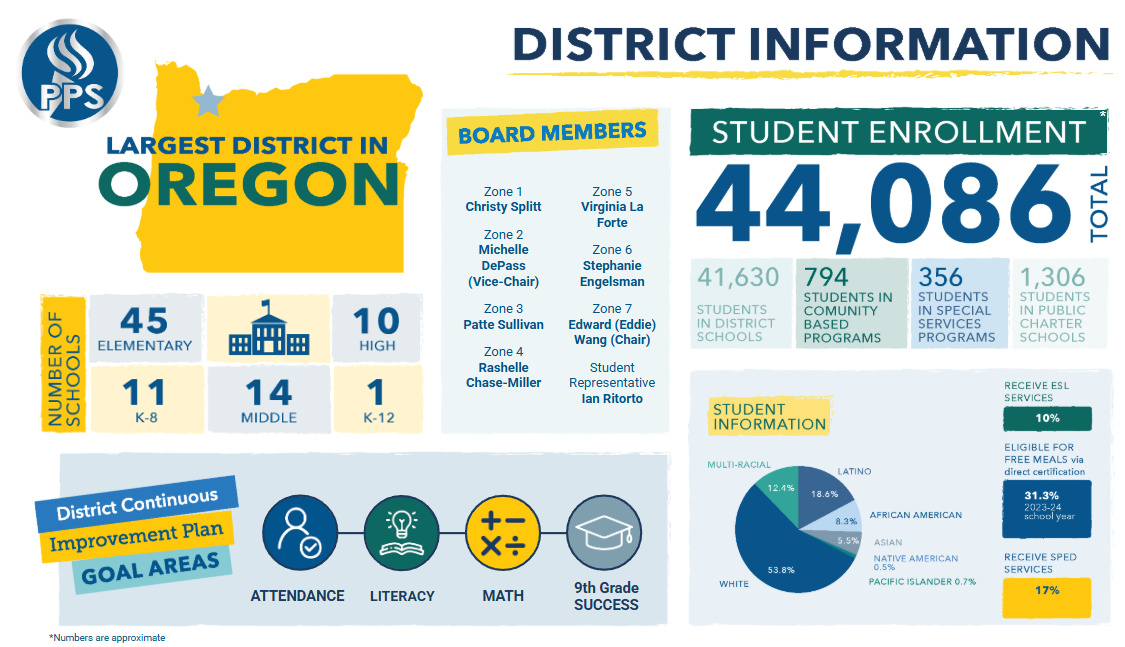
The college application process has looked different since 2020 due to COVID-19. Through the pandemic, many public and private institutions began to alter their admissions requirements, including many going “test-blind” or “test-optional,” meaning the once-important SAT or ACT tests were no longer required. An important distinction to make when reading a school’s test policies: Test-blind means that schools will not consider a submitted score at all, while test-optional means that students may choose to submit, and their score could be a deciding factor for them getting into the school. This change was a relief to students who did not get to take a test due to the pandemic, and many schools plan to stay test-optional as the years go on.
The spark of these changes was a global pandemic. However, the downfall of standardized testing has been years in the making. For decades now, there has been debate about the necessity of testing requirements. Some schools, like University of Oregon, became test-blind even before the pandemic. In addition to ditching test requirements, many schools have altered other aspects of the process in light of issues students faced around the pandemic. This included loosening application deadlines, accepting “pass” grades instead of letter grades, and lowering minimum GPA requirements. In general, it can be expected that these changes will continue throughout the next few years.
Jessica Natonick is a counselor at Franklin and has lots of experience guiding students through the college admissions process. She explains that “[colleges] are not making it easier or harder to get into the school, but they’re trying to take a more holistic approach at reviewing applications.”
In addition to becoming test-optional, many colleges have also become more flexible with their deadlines. “Some schools that had very firm application deadlines have either extended them or gone to rolling admission, which allows for students to apply later or to take more time on their application and explore the college before deciding if they want to apply there,” she describes.
The COVID-19 pandemic was a huge motivator for these changes, Natonick explains. “[Colleges] are trying to be open to the idea that as a result of COVID-19, a lot of students are questioning if they want to go to college right away, due to health and safety as well as their personal, emotional, and mental health concerns.”
She reiterates that while many colleges have been more flexible with deadlines during the pandemic, not all have promised to stay that way in the coming years. However, many schools are considering keeping these changes. University of Oregon plans to keep their test-blind policy for the foreseeable future. “We have always considered many factors in the process, so the absence of test scores has not greatly impacted the way we review students,” stated a spokesperson for the university. “We know that there are many factors that determine college-readiness beyond standardized test scores.” Things like college essays may carry a little bit more weight due to the absence of test scores. However, some colleges are requiring fewer letters of recommendation than before, in another attempt to lighten the load of the admissions process.
It’s not just state schools who have made these changes. Reed College, a private school in Portland, adopted a similar test-blind policy, and they plan to keep it for at least the next few years. “[The test-blind] policy will stay in place for the 2022 and 2023 admission cycles, with a possible extension after that,” they stated. “Our admission decisions have always been based on a holistic review. Reed has always recognized that a student cannot be reduced to a single grade, test score, or GPA. Our students are a combination of experiences, passions, and aspirations.” They went on to further explain their intentions behind this change. “We want to get to know each student as a person, and we feel confident that our decision to go test-blind has helped us do that.”
Natonick supports test-optional admissions as she believes it makes college more accessible to a wider range of students; however, the process will still make sure everyone who gets in is able to be successful in a post-high school environment. “It’s not as though by removing the test scores, they’re seeing students that wouldn’t normally get in apply. It’s still the same awesome kid that’s applying. So there’s really no reason to force the test scores on students when there’s an opening.”
There is some value in taking the tests, she notes. “There may be schools that have an honors college or a specialty program. They might be test-optional for general admissions, but perhaps they’re going to expect to see a score for their competitive program within that school.” But a vast majority of schools, including Cornell (at least until 2024), the UC schools, and other prestigious institutions are no longer requiring those tests. As more and more schools adopt similar policies, it’s likely test-taker attendance will continue to drop.
Decreasing the workload on students is not the only reason why some schools are phasing these tests out. The tests themselves have racist and classist histories, dating back to the early 1900’s, where the tests were created by eugenicists as a way to prove the “superiority of the Nordic race group,” according to an article by National Education Association. The language and context used in the tests is generally white-centric, and overall, the content of the tests is heavily based in white dominant culture. Test taking as an end-all, be-all mode of assessment, and the value of adding a proficiency score to a person is a white dominant cultural trait, so students with different cultural backgrounds often struggle with the format and pressure of the tests. So although test creators screen for obvious bias in the questions, the tests as a whole have always been and will always be tools of exclusion that benefit white, upper class, able bodied students. The history of these tests along with their underlying bias have caused many schools to come around to the idea that a test with such an intentional exclusionary background should not be required for their admissions.
Alena Krull is a senior at Franklin and applied to a variety of colleges this year, including three Oregon schools: Pacific University, Lewis & Clark College, and Linfield University. While the experience was stressful, she was happy about the increase in schools going test-optional. She and many other students experience test anxiety, and the freedom to opt out of the SAT and ACT lightened the load of the already stressful application process. She’s not alone: the number of ACT test takers dropped by 22% in 2021 from 2020, according to Forbes. “You shouldn’t have to get a good score on a test just to go to college,” Krull concludes.
So if there can be a silver lining to the stress students have endured during the pandemic, possibly it is in the new holistic and understanding approaches to college admissions. While untangling the knot of systemic barriers around college is a long journey, this is a good place to start.

































